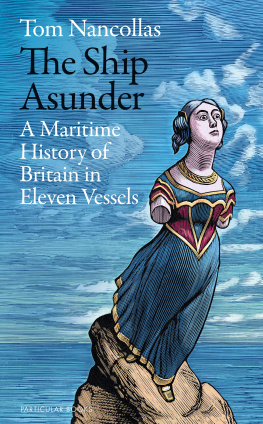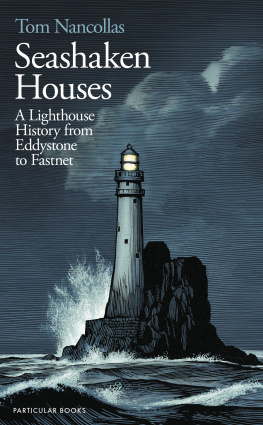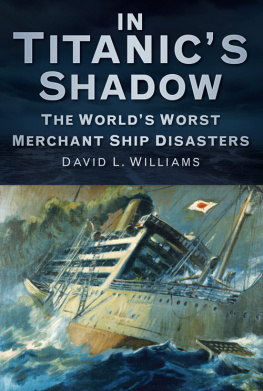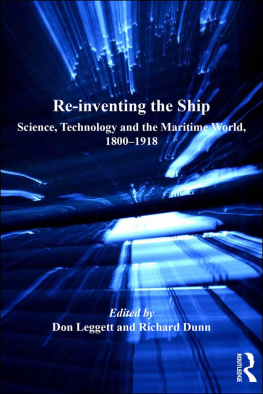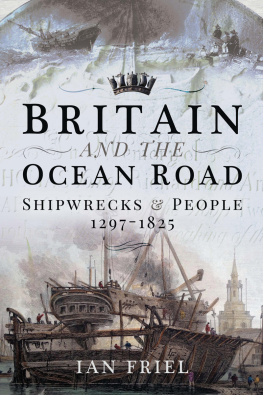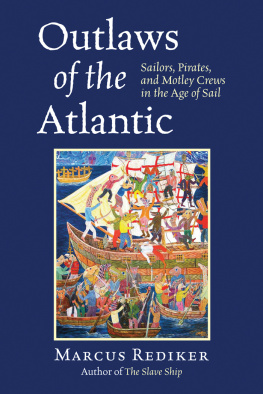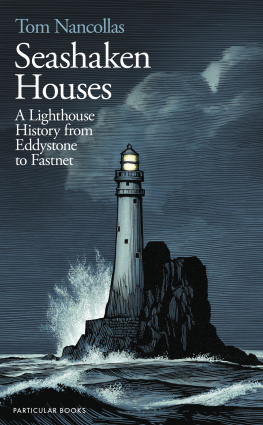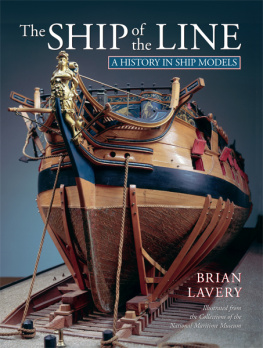Tom Nancollas
THE SHIP ASUNDER
A Maritime History of Britain In Eleven Vessels

PENGUIN BOOKS
UK | USA | Canada | Ireland | Australia
New Zealand | India | South Africa
Penguin Books is part of the Penguin Random House group of companies whose addresses can be found at global.penguinrandomhouse.com.

First published by Particular Books 2022
Copyright Tom Nancollas, 2022
The moral right of the author has been asserted
Cover illustration: Chris Wormell
ISBN: 978-0-141-99217-4
This ebook is copyright material and must not be copied, reproduced, transferred, distributed, leased, licensed or publicly performed or used in any way except as specifically permitted in writing by the publishers, as allowed under the terms and conditions under which it was purchased or as strictly permitted by applicable copyright law. Any unauthorized distribution or use of this text may be a direct infringement of the authors and publishers rights and those responsible may be liable in law accordingly.
To Ida
And to the memory of Joseph Alexander Hopkins 19872021
When he first saw a ship rent asunder,
He never beheld one at sea without,
In his minds eye, at the same instant,
Seeing her skeleton.
John Ruskin, 1856
Introduction
Navigating by the spire, I skirt my old school with a rumour in my head: From a tradition which the inhabitants have among them a large ship was built near the place where there is now a spring of fine water
Lying between the Forest of Dean and the River Severn, Lydney can fairly be called an unprepossessing town. I do so affectionately, for I have known it for years. Its buildings straggle and sprawl unpretentiously. It lacks the picturesqueness for which Gloucestershire is better known. Very little you see today predates the nineteenth century, which wracked Lydney with train tracks and industry. It does have a few civic ornaments Bathurst Park, the Town Hall, the Cross. But it is a place, mostly, where people live, are schooled, work, grow old, pass on. A place that to the outsider would not seem to have much magic. For a while I thought it had no magic either.
Nor did I think it had much to do with the sea. Lydney harbour for it does possess one lies at a strange remove from the town proper, as though it were straining for a maritime presence. It is the result of a comparatively recent, nineteenth-century scheme in which the river Lyd was canalised and trammelled down to the Severn. When thriving, it was an artery for the minerals mined from the Dean and sent abroad. I knew it only as a place of truants, mossy quays, stagnant water. But in fact, Lydney has richer, more occluded maritime pedigree than this.
I walk towards the church through a Lydney I have known all my life, a place in which I was raised, confirmed and schooled; a place I later sought to leave and still later shyly revisited. Mostly my recollections of those years are shapeless, but the ensemble of the road, the school and the church vividly uncork all their navigations and humiliations. But I refocus on the spire and come up to the churchyard, looking for the scene of a shipbuilding.
I navigate, too, by Samuel Rudder, aptly named Gloucestershire antiquarian, who walked here three hundred years before me, himself navigating, in turn, by even older voices. In compiling his History of Gloucestershire, published in 1779, he heard that from a tradition which the inhabitants have among them, the tide [of the Severn] in its usual course formerly came up to a bank of earth called the Turret, just without the church-yard Now, the churchyard edges an asphalt crossroads, beyond which the land falls gently into an industrial estate where once, according to Rudders informants, a large ship was built Now, as then, the suggestion seems unreal.
Weekday morning doldrums. Hush hanging over the low warehouses behind steel fences. A mild breeze reaches the crossroads from the estuary, carrying whiffs of turbid water and alluvium, spectral suggestions of the Severns former presence here. For it was here, somewhere here, that the river once appeared when in spate, and there, over the crossroads and down the shelving road, where that large ship must have been built. Its not an exact piece of triangulation, for the overlain mesh of rails and roads have made the underlying topography quite hard to read. Then I halt upon the threshold of an industrial unit. Within are orderly rows of shipping containers stencilled with the runes of modern freight.
Shortly after this mysterious vessel was built, the Severn heaved its great body further east and left Lydney landlocked. Perhaps this is why, barely a century later, the site of her construction had been lost to memory. To Rudder, the townsfolk of Lydney could relate only imprecise details, but the next century yielded a tantalising clue. During the building of a new railway line to link the town with its now-faraway harbour, the remains of a stone wharf, cannonballs and chain-shot were found somewhere below this concrete hardstanding. Then, before the First World War, certain state papers of the Stuarts, rediscovered by another Gloucestershire antiquary, rekindled the old rumour. And I, casting off for this book, heard the story which made Lydney blaze anew in my eyes.
For here, in the dog-days of the Commonwealth, that terse, strange period of English history, Lydney and her people built a warship. She was a fifth-rate frigate mounting twenty guns, built to serve in the Commonwealth navy, to patrol, to convoy, to skirmish with Cromwells enemies. She was a creature of Forest oak and Forest ore, and she projected Lydney into some of the most pivotal naval engagements of the day, extending this parishs horizons beyond its boundaries. She was, in fact, a character who should loom large in Lydneys story. Her name was Forester.
This book tells of ships and their shaping of Britain: the lost vessels underfoot, on our seabeds, below our horizons, to which we owe so much. It is a story we have thus far traced back 8,500 years, beginning with these isles cleavage from the continent. Mysterious vessels duly appeared to make the crossing between the new chalk cliffs. They were delicate things, their yew stitches no nails, yet easily sundered in rough weather, leaflike in relation to the vast currents of water they were crossing. And though worked and shaped by bronze tools and the evolving skill of their handlers, there was something definingly organic about these first ships, the sense that, their stitches unlaced, they might return in an instant to their roots.
All this, of course, took place before history began. Only some millennia later, in the first century BC , were the first drops of ink spilled on what Roman scribes called Britannia. Over the next few centuries, foreign hull-forms asserted themselves in these waters, from a very different shipbuilding tradition. Roman warships rode at anchor in the harbours of Britannia which, no longer wholly natural, had been augmented with quaysides and seawalls. The bronze rams on the prows of these vessels were like chisels crafting a new seascape for this annexed province.
Centuries washed by. Roman hulls ceased to work the water, while new, equally aggressive vessels came in arrow-showers from Scandinavia. Viking longships harried the painfully exposed eastern and southern flanks of what had been called Britannia. They were long, serpentine and from an equally foreign shipbuilding tradition to those the Romans displaced. Eventually the harrying ceased with another conqueror, William the Bastard, who crossed the Channel with his men in vessels not terribly dissimilar to those Viking longships from which they were descended. His flagship was called

